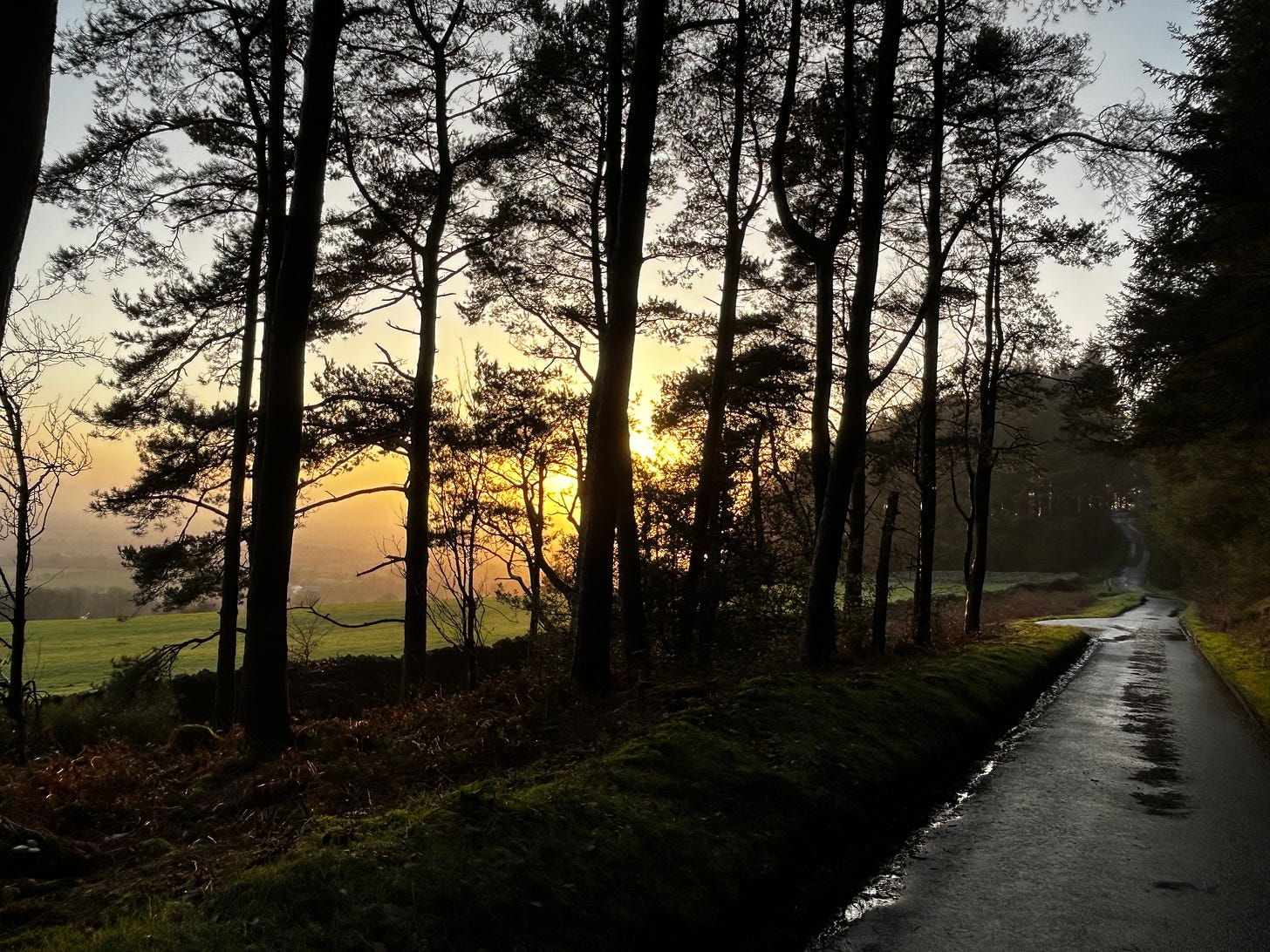Welcome to Regen/Notes. This edition dives into the world of Salutogenesis, exploring its significance in co-creating a regenerative built environment that, through enabling meaningful life, is conducive to thriving nature and communities.
“The slow and difficult trick of living, finding it where I was” - Mary Oliver, Going to Walden
We have a copy of the Handbook of Salutogenesis here in our home study. It is a wonderfully rich tombe of Salutogenesis thinking from a wide range of authors across a wide range of disciplines, mostly medical but also includes architecture and society. We have a copy here as my partner Soo Downe has a paper included in respect of salutogenesis in Birth, Neonatal and Infant Care Settings. Consequently discussions around salutogenic concepts are not uncommon chez nous
Salutogeneis was included in my 2016 RIBA FutuREstorative: working towards new sustainability as a means of introducing the topic into built environment sustainability thinking, embracing the ideas of salutogenesis, a term coined by Aaron Antonovsky
Salutogenesis is a concept that focuses on factors that promote and maintain well-being and health, rather than solely focusing on the causes of disease or illness. It emphasizes the creation of conditions that support and enhance health rather than just preventing or treating illness. FutuREstorative.
It was natural that FutuREstorative would include an introduction from Soo which provides a great introduction to the concept …
The concept of salutogenesis was developed by Aaron Antonovsky, a medical sociologist, while he was undertaking research with older women who were survivors of Nazi concentration camps. He expected to find high levels of psychological pathology in these survivors, and, indeed, this was the case for many of them. However, he was surprised to find that a small minority retained a positive outlook on life, despite all the traumas they had endured. He began to wonder how people could endure such extreme horrors, and still maintain a positive outlook. He also began to question the focus on pathology which permeates much of healthcare research and practice, and public health philosophy. These reflections led him to the theory of salutogenesis or the ‘generation of wellbeing’ (Antonovsky 1979, 1987)
Salutogenesis maintains that human beings exist on a spectrum – from death at one end to a full and healthy life on the other – and that we all move along this spectrum, in both directions, throughout our lives. Antonovsky was particularly interested in the potential for the promotion of well-being at the ‘healthy’ end of this spectrum, to balance the strong professional and sociopolitical emphasis on ill health at the negative end of the spectrum. He developed the concept of the sense of coherence (SOC). This includes three key parameters: manageability, comprehensibility and meaningfulness.
“… the term salutogenesis has made inroads to hosiptal design, and it is creeping into the architectural design of aged care, schools, workplaces and correctional care - at least as a buzzword for marketing” Jan Golembiewski
Explored in this Regen/Notes edition: - Key Salutogenesis principles, - Salutogenesis and Biophilia, - What does good feel like, - A Meaningfulness framework for our built environment, and importantly - Salutogenesis in respect to health of Nature.
Key Salutogenesis principles can be seen as:
Sense of coherence: the importance of a strong sense of coherence, which heightens the capacity for comprehensibility, manageability, and meaningfulness when faced with stressful, challenging events (such as health arising from the built environment and the climate and biodiversity crisis).
Resources and assets: identifying and mobilising resources and assets that contribute to health and well-being.
Positive environmental experiences: the importance of positive experiences in promoting well-being.
Empowerment and participation: Salutogenesis emphasizes the importance of empowerment and active participation in promoting health.
The relationship to Biophilia is strong.
… yet it could be said that biophilia sits under the umbrella of salutogenesis.
Salutogenesis and biophilia share a strong bond that promotes human well-being through a positive connection with nature. Whereas biophilic design, a subset of biophilia, is a proven way to integrate natural elements into built environments that enhance our attraction to nature and promote a healthy and positive lifestyle, salutogenesis is a broader framework that addresses various factors that promote health, well-being and meaningfulness.
Both Salutogenesis and Biophilia can and should be extended to bring about a thriving healthy natural world through our built environment.
What does good feel like?
It is no longer acceptable to simply ask what will good look like. We are not passive observers, but active agents with emotions and narratives that are neurologically interwoven.
“when we feel it is because our inducing chemistry changes in response to the narratives, which experience, for this reason, the most direct way to design for meaningfulness and to elicit positive emotions is to create architecture using the language of storytelling to design”
Ask what this design says to the user. How does it deliver meaning to life?
Often features of the built environment say the wrong things and speak to meaninglessness (ones that use electronic surveillance, have disturbing acoustics, smells, textures, lighting, and in car central wasteland and dead ends in urban design)
Meaningful symbolic expressions, inaccessible views of nature, through impenetrable fences and walls. Are more likely to cause frustration than a sense of relief or release set.
With a strong sense of meaningfulness, the strong resource of emotion provides the capacity to turn one’s attention away from the uncertainties, negatives and difficulties of life and aesthetic focus on positive desires, and what is otherwise good and purposeful.1
Meaningfulness through our built environment
‘Simple concepts like comfort, joy and aesthetics have had no place in traditional hospitals,’ notes Jan Golembiewski in his article ‘Salutogenic design – The neural basis for health promoting environments’, ‘yet they are the psychological bricks and mortar of all healthy buildings whether or not they are health care buildings.’
The handbook contribution from Jan Golembiewski talks of buildings that enable meaningful lives for those who live work and play in our buildings …
As Golembiewski asks in his Salutogenic Architecture paper - “will (we) have the courage to go beyond generic “views of nature” tropes”
“ a transition of thriving salutogenesis, to support planetary thriving, indeed health for all” Saluogenesis for a Thriving Society M.B Mittlemark et al in the grand finale paper in the Salutogenesis Handbook
Nature Connectedness
Can salutogenesis thinking be applied to current nature-positive thinking? The original concept was concerned with human health, yet as Mittlemark is sure that Antonovsky would have introduced thriving society into his work if that was the zeitgeist at the time, so he would have included thoughts on flourishing non-human health and nature.
When applied to the health of nature, salutogenesis principles can help promote ecological well-being and sustainability.
Sense of coherence: promoting understanding and awareness of ecological systems, the interconnectedness and patterns, and the impact of human activities on the environment. It also involves creating opportunities for individuals and communities to engage in meaningful actions to protect and restore nature.
Resources and assets: recognising the value of natural resources and ecosystems and working to protect and enhance them. It includes identifying and utilising sustainable practices that promote biodiversity, conserve natural resources, and reduce ecological impacts.
Positive environmental experiences: the ‘what good feels like” - creating opportunities for individuals and communities to engage with and connect to the natural environment. It includes promoting activities such as outdoor recreation, ecological education, and nature-based therapies that enhance people's relationships with nature and foster a sense of connection and well-being.
Empowerment and participation: empowering individuals and communities to take an active role in environmental conservation and restoration efforts. It includes providing opportunities for participation in decision-making processes related to land use, natural resource management, and environmental policies.
If you should want to discuss further, explore facilitation or support of salutogenesis conepts within your organisation or project, please do get is touch
Jan Golembiewski





